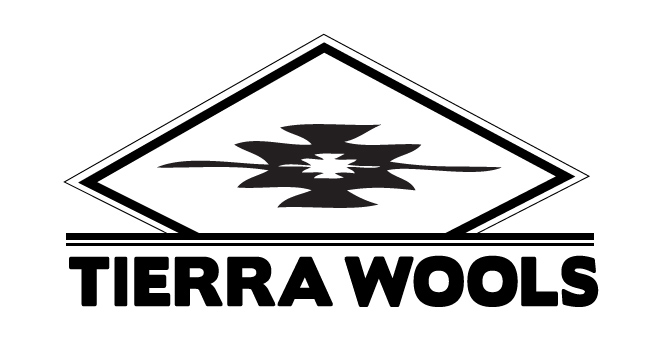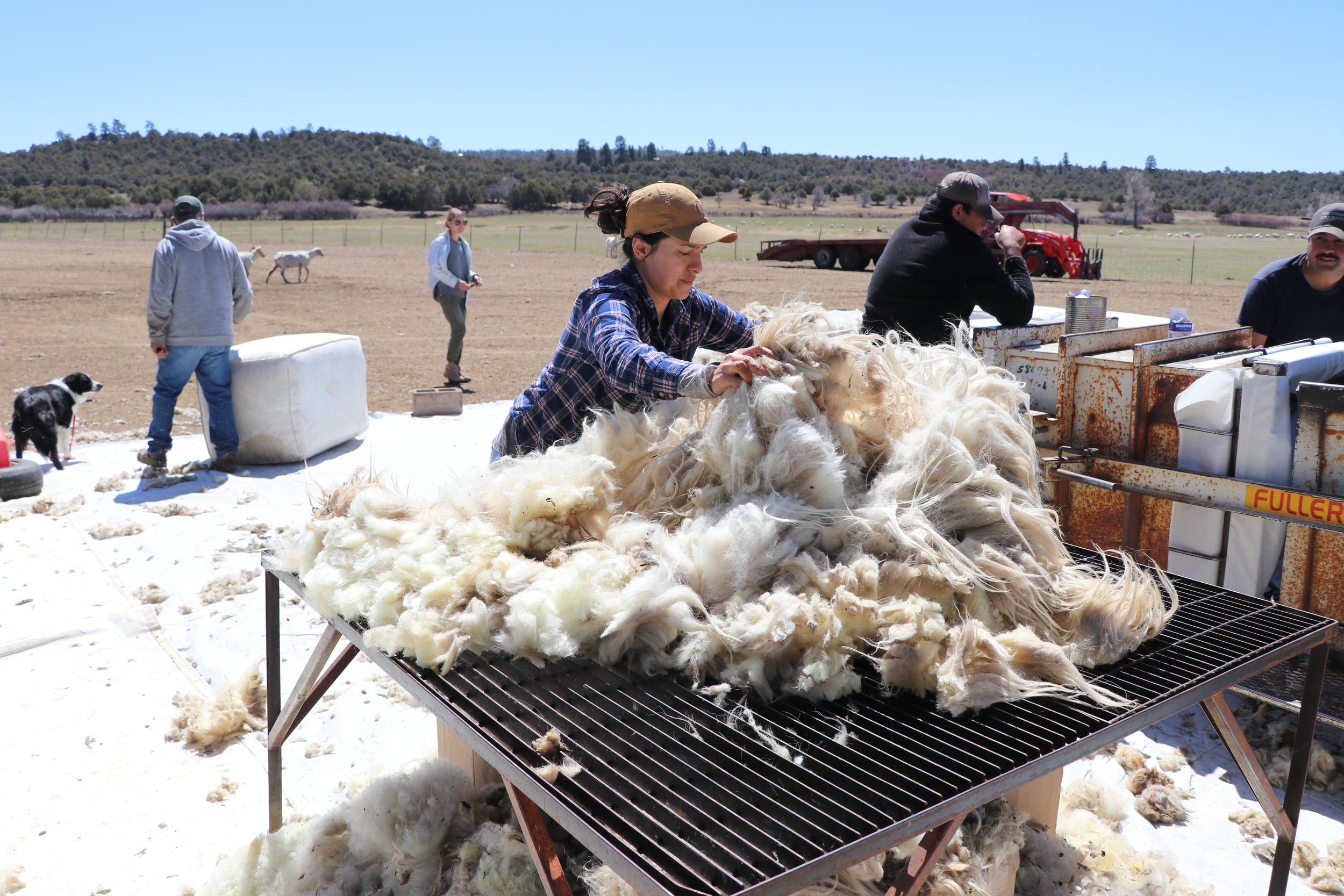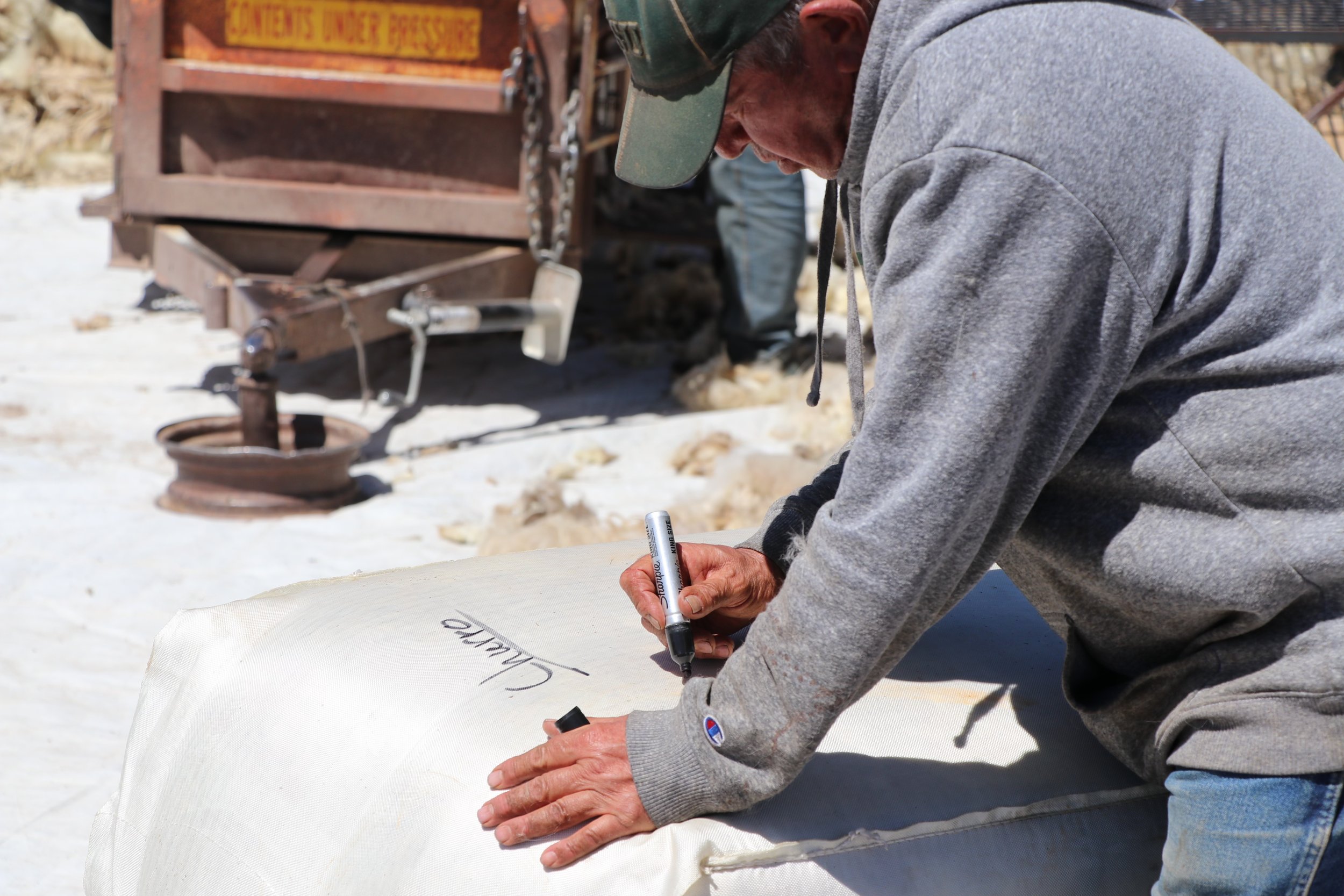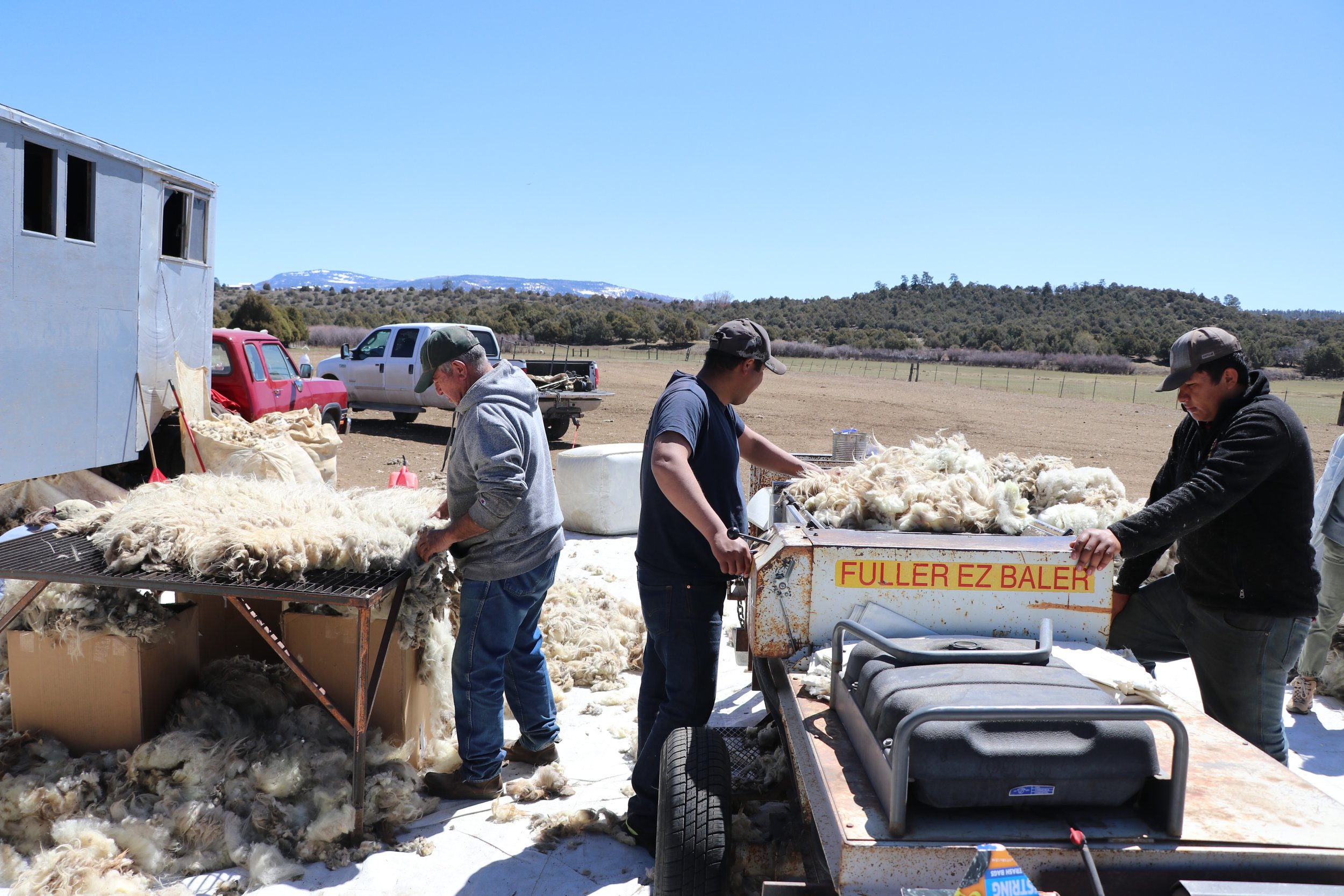As the days lengthen with the coming of spring, the whole world begins to brighten with the prospect of new growth and new life in our landscape. And with it comes spring shearing time, our annual wool harvest and the opportunity to help our ewes get a little more comfortable by removing their wooly coats as they get ready to have their babies in the next few weeks.
While we await the arrival of the shearing crew from southern Colorado, we’re always hoping for a fine spring day – bright without too much wind – to set up the shearing trailer, tarps, skirting tables, and baler.
It takes us two days to shear the entire flock. We start with the white Rambouillet sheep – our fine wool fleeces – so that the color of the wool isn’t contaminated by stray bits of brown or black from the other breeds. Then we move onto the grays and browns and blacks of the Navajo-Churro sheep. Each fleece is placed on the skirting table and given a quick once-over by hand to remove any dirty or soiled parts.
Then it’s into the baler! The baler makes easy work of what was formerly the most labor-intensive part of the operation - in the “olden days,” long burlap sacks were hung from a frame and someone would stand inside the bag and pack down the fleeces down as they were thrown in! Each bale is carefully labelled so we can keep track of the different types of wool.
With the work of spring shearing done we have just enough time to take a breath before lambing time begins – the heart of the ranching year.






